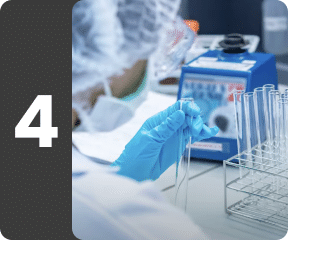Diabetes Screening + Lipid Profile near me in Hyderabad
Understanding Diabetes Screening + Lipid Profile in Hyderabad
What is Diabetes Screening + Lipid Profile in Hyderabad?
This package comprises Lipid Profile & Diabetes Screening tests. The lipid profile measures the amount and type of fat in the blood, and Diabetes screening helps diagnose and monitor diabetes.
The lipid profile test measures total cholesterol, LDL(low-density lipoprotein), HDL(high-density lipoprotein) and triglycerides in the body. It is frequently recommended in people who are overweight, have diabetes, lead a sedentary lifestyle, or are undergoing treatment for high cholesterol and heart disease.
Diabetes screening comprises a Fasting blood glucose test, which measures the amount of circulating blood sugar, and a Glycosylated Hemoglobin test which measures the average blood sugar levels over the past few months. These aid in managing the disease in diabetic patients and are highly recommended.
What does Diabetes Screening + Lipid Profile measure?
Contains 10 tests
Diabetes Screening
Diabetic screening includes two set of tests - Glycosylated Hemoglobin test and Glucose - Fasting blood test.
Glycosylated Hemoglobin Test measures the percentage of glycosylated hemoglobin in blood which reflects the average blood glucose over a period of past two to three months (8 - 12 weeks).
Hemoglobin is a protein found in Red Blood Cells and is responsible for transporting oxygen. There are different types of hemoglobin among which Hemoglobin A is predominant. With the elevation of blood sugar levels, some glucose binds spontaneously to Hemoglobin A (this binding is called Glycosylation or Glycation) and remains bound for the complete lifetime of the RBC, which is normally 120 days. Higher the level of glucose in the blood, the greater the amount of it binding to Hemoglobin A. Hemoglobin A1c is the dominant form of Glycated Hemoglobin. As RBCs die and get replaced, Hemoglobin A1c is cleared and gets slowly replaced with non-glycosylated hemoglobin. Measurement of HbA1c level over a period of time gives an indication of the level of glucose in the blood over that specific period of time. This not only helps in the diagnosis of Diabetes but also is useful for monitoring the effectiveness of measures taken to reduce blood sugar levels.
Glucose - Fasting Blood Test is done to measure the levels of glucose in blood during the period of fasting.
Glucose is the main source of energy for the body. Carbohydrates consumed in the diet are broken down in the body to form glucose, which is absorbed by the intestines and transported by the blood to various organs. The cells of these organs utilize the glucose to produce energy when required, and the excess is stored either as glycogen in the liver for short-term storage or in fat tissues as triglycerides for long-term storage. The uptake, utilization, and storage of glucose after it has been absorbed in the intestine is facilitated by a hormone called insulin. This hormone is secreted by the pancreas. Insulin influences the transport of glucose to the organs like heart, brain, working muscles, etc. It also directs the storage of excess glucose. These actions of insulin reduces sugar levels in the blood.
After a meal, sugar levels increase in blood, and insulin is secreted in response to reduce the sudden increase in sugar levels until it becomes normal. If in this process glucose levels fall too low in blood, another pancreatic hormone called glucagon is released. This hormone, directs the liver to convert stored glycogen into glucose and releases it into the blood. Both these hormones, insulin and glucagon, create a feedback mechanism to keep blood glucose levels within the normal range. Any imbalance in their activity causes an excess or shortage of blood sugar.
Glucose - Fasting blood Test helps to determine if the body is able to utilize or store glucose efficiently. High levels of sugar in blood indicate diabetes or resistance to insulin. Type 1 Diabetes is caused when insulin is not produced or produced in very little quantity. Type 2 Diabetes is caused when insulin is produced but is not being effectively utilized by the body. In both these cases, blood sugar levels rise, while cells remain deprived of nutrition.
Know more about Diabetes Screening
This further contains
- Glycosylated Hemoglobin
- Glucose - Fasting

Lipid Profile
The Lipid Profile Test typically measures the levels of total cholesterol, HDL cholesterol, LDL cholesterol, and triglycerides. Other results that may be reported include VLDL cholesterol, non-HDL cholesterol, and total cholesterol to HDL cholesterol ratio.
Lipids are fatty acids which store energy for the body and play essential roles in cellular structure and cell signaling. Cholesterols and triglycerides are essential lipids, carried in the blood by lipoprotein particles made up of cholesterol, triglycerides, proteins and phospholipid molecules. The lipoprotein particles are classified according to their densities into High Density Lipoproteins (HDL), Low Density Lipoproteins (LDL), and Very Low Density Lipoproteins (VLDL).
Cholesterol is a fat-like substance formed in the liver, as well as obtained from dietary sources. It is found in all the cells and is an essential part of the structural framework of the cells apart from performing various vital body processes. However, excess cholesterol is harmful. Increased cholesterol in blood can cause it to get deposited on the inner walls of the blood vessels forming plaque.
Triglycerides are the commonest type of fat in the body. Triglycerides are obtained from dietary sources and form the stored fat in adipose tissues. Increase in triglyceride concentration can also give rise to cardiovascular diseases.
High Density Lipoproteins or HDLs are high density particles which help to reduce the chances of cardiovascular diseases by picking up and carrying lipoprotein particles of lower density to the liver for disposal.
Low Density Lipoproteins or LDLs are lipoprotein particles of low density which carry cholesterol to the tissues. Cholesterol carried by LDLs easily comes out of blood and get deposited on the inner walls of the blood vessels, increasing the chances of cardiovascular diseases.
Very Low Density Lipoproteins or VLDLs are lipoprotein particles of very low density which carry triglycerides to the tissues. Excess triglycerides in blood causes increase in VLDL particles which in turn again increases the chance of developing cardiovascular diseases.
Plaque deposition makes the lumen of the blood vessels narrower thereby preventing proper flow of blood and may stop the flow completely. Excessive plaque deposition can also cause the arteries to harden, giving rise to a condition called Atherosclerosis. Improper flow of blood prevents the supply of nutrients and oxygen to the vital organs and may cause heart attack or stroke.
Know more about Lipid Profile
This further contains
- Cholesterol - LDL
- Triglycerides
- Cholesterol - Total
- Cholesterol - HDL
- Very Low Density Lipoprotein
- Total Cholesterol/HDL Cholesterol Ratio
- LDL/HDL Ratio
- Non HDL Cholesterol
Book a Diabetes Screening + Lipid Profile test at home near me





Other tests









